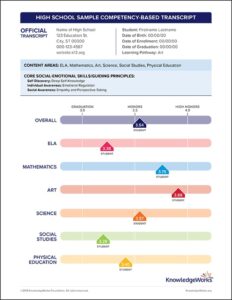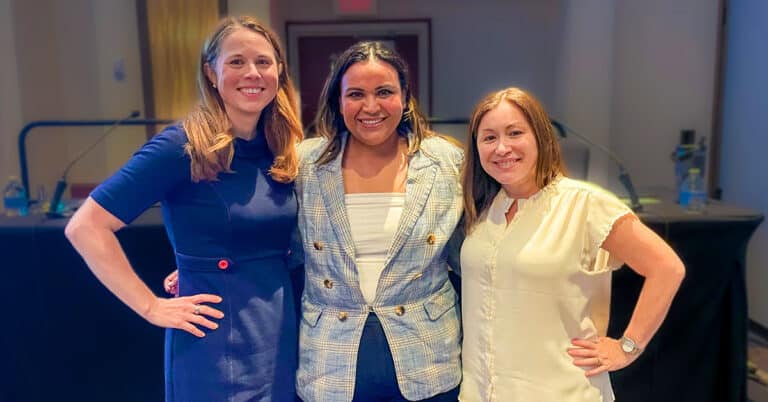Grading in a personalized, competency-based learning system looks a lot different from a traditional A, B or C, but Britt Breiland, a seventh and eighth grade English teacher with Northern Cass Public School District 97 in Hunter, North Dakota, feels she has a much better idea of what her students know – and what they need from her – than ever before.
“In the past I’ve used rubrics and assigned point values, but I’d get stuck,” says Breiland. “I’d add up all of the points, look at the grade and feel that it wasn’t an accurate representation of that student and their writing.”
For Breiland, writing is a “growth process,” and traditional rubrics didn’t leave a lot of room to measure growth or to provide the kind of critical feedback her students needed to become better writers and critical readers. She started using proficiency scales this year, supported by additional professional development provided by her district. Breiland and her colleagues have been able to define what mastery of each individual standard looks like and illuminate for herself and her students where they are in their efforts to demonstrate mastery. She teaches the proficiency scales at the start of each unit to her students, so they’re aware of what they’re working on, and she uses an individual proficiency scale for each standard – versus a rubric that might’ve been all over the map.
There are four levels in the proficiency scale that Breiland is using, similar to those used in other personalized learning environments:
- Mastering a standard is assessed at a 3, and this is the level that all students are working towards
- A level 2 is when a student knows the basic vocabulary and can do the process
- A student assessed at a level 1 can do parts of level 2 and 3 with significant help
- Students always have the option to pursue a 4, which is using what they’ve learned in a higher context
Breiland gave examples of what this might look like in her classroom when looking at a specific standard: determining the theme of a story. A student at a level 2 would be able to define what a theme is, whereas a student at a level 3 would be able to identify the theme in a given text. A student at a level 4 would be able to evaluate the theme or find another text with a similar theme. With each assessment, Breiland has the opportunity to give the kind of feedback on each individual standard that her students need to get to a 3.
“With proficiency scales, learning is more transparent for kids but it’s also so much more transparent for me,” says Breiland. “I know how they’re learning, where they’re at and what they need from me. These aren’t grades – this is about where you are in your learning process, not where you are compared to the person next to you.”
Students in Breiland’s classes are also taking greater advantage of opportunities to revise their work. Though the option has always been available to them, this method of assessment allows students to see beyond receiving a final grade and moving on.
“They will come up and ask me, ‘Am I giving enough detail? Is this good evidence?’ They’re checking their work more,” says Breiland. “That’s what all educators want, for students to be thinking about what they’re learning. If we can do that by allowing more time and transparency, that’s the ticket.”
Get answers to common questions about competency-based transcripts.
This was written by former Senior Manager of Communications Jillian Kuhlmann.




